Sauerkraut is a food product obtained by the fermentation of raw cabbage in a specially prepared brine under the influence of lactic acid bacteria.
In the past, before refrigerators and freezers, fermentation was a very convenient method for preserving food. For this reason, fermented foods can be found in the kitchens of many different cultures.
History of Sauerkraut
Sauerkraut is believed to have first been made by the Germans. But it has an even longer history, because it was known to the Chinese as far back as 2000 years ago, when chopped cabbage was prepared in rice wine. The claim is that it was brought to Europe about 1000 years ago.
In the past, the Germans used the method of dry fermentation, which consists of salting the chopped cabbage and flavoring it with junipers. After the salt absorbs the water, the liquid is then used as a marinade.
The Dutch, who were renowned sea merchants, loaded their ships with sauerkraut. The reason for this was the long shelf life of sauerkraut and its ability to protect against scurvy.
Composition of Sauerkraut
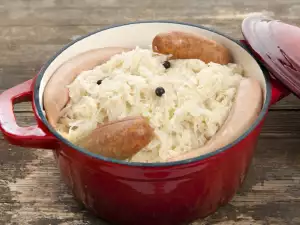
Sauerkraut is overflowing with vitamins. Just 4/5 cup (200 g) of it provide half the recommended daily value of vitamin C. It's rich in vitamin B6, nicotinic acid and a number of micronutrients such as zinc, magnesium, potassium and iron.
Benefits of Sauerkraut
Besides its unbelievable taste qualities, sauerkraut stands out with a variety of health benefits. First off, consumption of sauerkraut helps restore the balance of gut flora.
Sauerkraut is one of the few foods containing the beneficial bacteria Lactobacillus plantarum. These bacteria aid the function of the immune system, generate nutrients such as omega-3, suppress the development of harmful bacteria such as Candida, E. coli and others.
Sauerkraut gets rid of stomach problems because the lactic acid bacteria in it, which have an antimicrobial effect, have a positive effect on gut flora, to the benefit of beneficial intestinal bacteria.
Sauerkraut is an excellent way of supplying the body with fiber, probiotics, digestive enzymes and vitamins in seasons when fresh vegetables are scarcer.
On its own, sauerkraut falls in among the ranks of superfoods. It protects the body from cancerous diseases, inflammations and slows the aging process. It's important to note that the natural fermentation of sauerkraut turns the healthy substances in the otherwise difficult to digest cabbage into easily absorbable ones.
The anticarcinogenic properties attributed to sauerkraut are explained by the fact that during the process of fermentation, isothiocyanates form in the cabbage. These substances hinder the formation and development of cancer cells.
Sauerkraut is very low in calories and satisfies hunger quickly, making it suitable for people on a diet. Sauerkraut and its juice are potent natural probiotics, which is why they're also particularly prized by people with gastritis or ulcers. A glass of sauerkraut juice, drunk in the morning on an empty stomach has beneficial effects on the stomach lining.
The vitamin K in sauerkraut is very important for bone metabolism, and when combined with high quantities of vitamin C, they become an unbelievable combination that improves bone strength.
Making Sauerkraut
First you need a plastic drum. You need to get plenty of cabbage heads to completely fill the drum. Choose healthy cabbages of medium size. You will also need a hose to decant the cabbage. To make it easier, the drum in which you intend to store the cabbage should have a spigot.

Place one end of the hose at the bottom of the drum. Arrange the cleaned cabbage heads tightly, have them press down on each other. Pour brine into the drum. The brine is one of the most important parts in making sauerkraut. It requires 2 2/3 tbsp (40 g) of salt per 4 1/5 cups (1 L) of water.
Make as much brine as needed to submerge the cabbage heads completely. The drum needs to be left in an area of moderate temperature (not too cold or too hot). After 7 days, blow into the hose to get the salt mixed around, do this every few days until the cabbage sours. After about 25 days, the sauerkraut will be ready.
If you'd like your sauerkraut to obtain a different color, add beetroots to the drum. For flavor you can also add an apple, quince, onions or lemon. If you're having difficulties in arrange the cabbages or they float up in the water, you can press down on them with a stone or other heavy object on top of a plate.
Cooking Sauerkraut
First off, know that in order to retain the maximum amount of healthy substances in the sauerkraut, don't rinse it off because you would also be washing away most of them. Heat treatment must be no longer than 20-30 min. for the same reason.
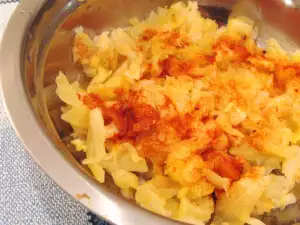
Usually, sauerkraut is eaten raw, like a salad, with meat or other dishes. One of the most common ways of eating it is quite simple - cut it up and season with paprika and oil.
Sauerkraut goes perfectly with winter dishes such as sarma and stews. It's excellent when roasted with pork and its brine is one of the most effective treatments for severe hangovers.
Dangers of Sauerkraut
As with everything else, you shouldn't overconsume sauerkraut. Despite the numerous health benefits it provides, it can also cause harm. The reason lies in the salt. Those suffering from kidney diseases need to be very careful with it. Excessive consumption of sauerkraut can lead to swelling in the body and fluid retention.




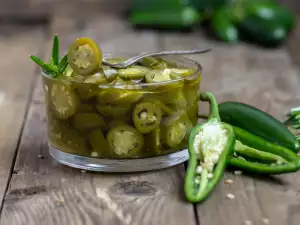
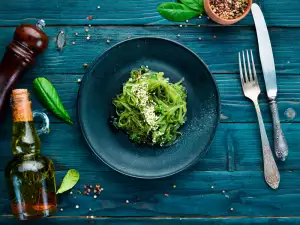
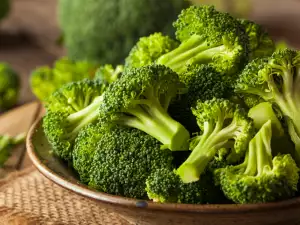
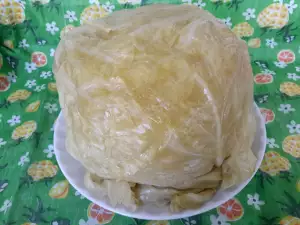









Comments